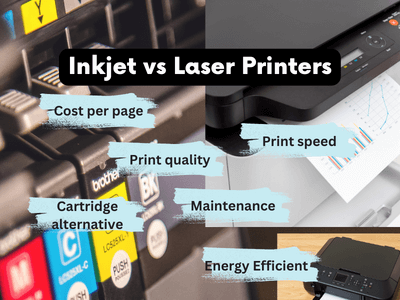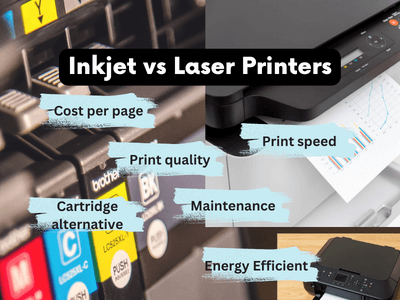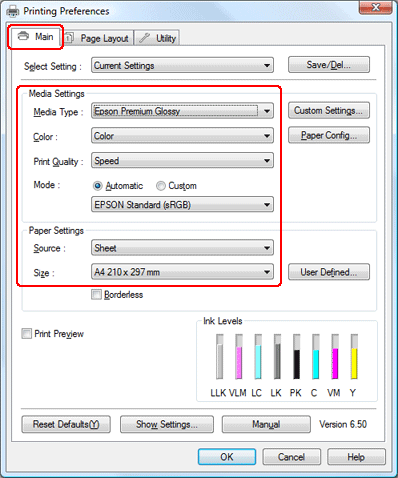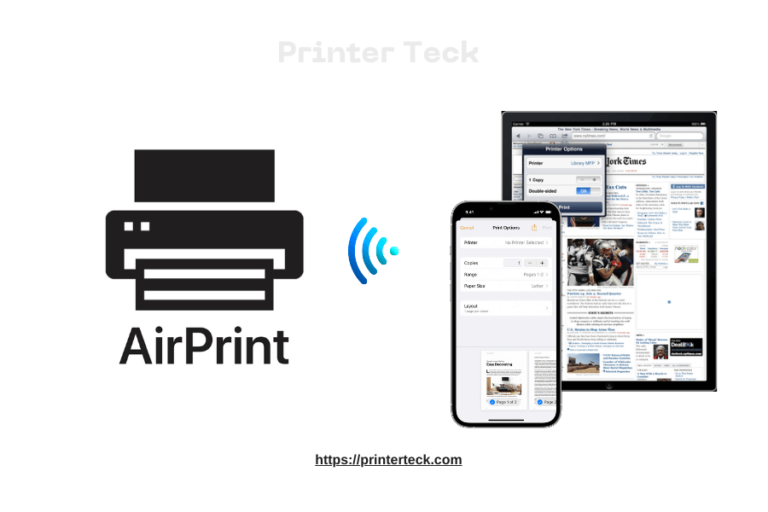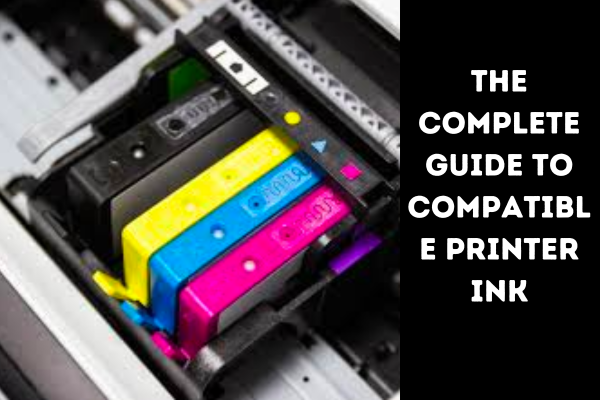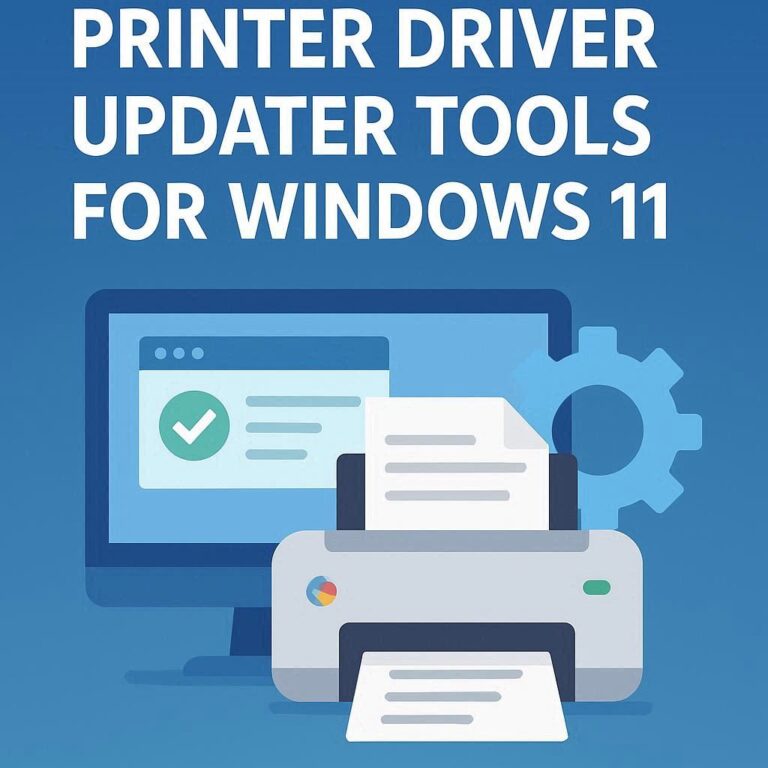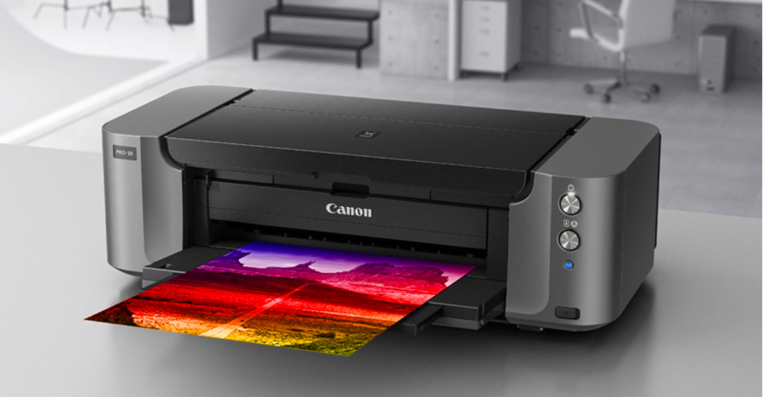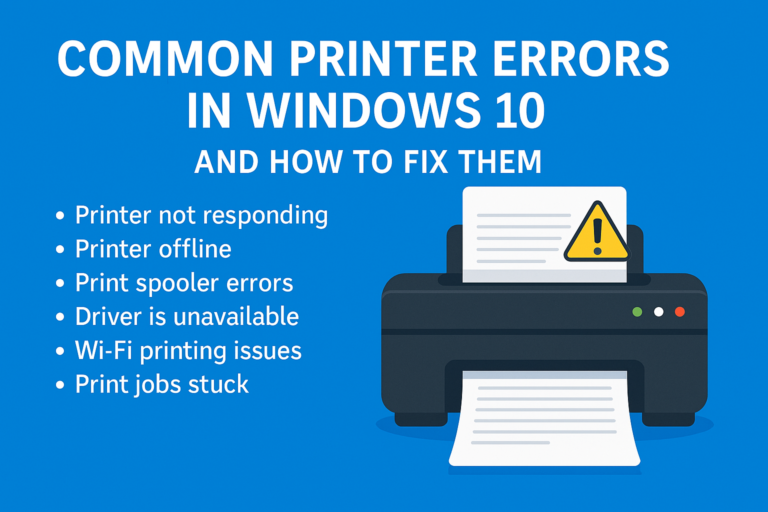Inkjet vs. Laser Printers: Making the Right Choice for Your Printing Needs
Inkjet vs. Laser Printers is one of the most common comparisons people make when deciding which device best suits their needs. Choosing the right printer depends on factors such as your budget, print quality expectations, and how often you plan to print. By weighing considerations like cost per page, print speed, and cartridge options, you can make an informed decision. Assessing your specific requirements and long-term cost-effectiveness will ensure you invest in the right printer for home or business use.
Quick Navigations
Inkjet vs. Laser Printers
Remember, there is no one-size-fits-all answer to which printer is best. It ultimately depends on your individual needs and preferences. By carefully evaluating the factors discussed in this blog post, you can make an informed decision and select a printer that will serve you well for years to come.
In today’s digital age, printers remain an essential tool for various purposes, whether at home, in the office, or in educational settings. Two popular types of printers are inkjet and laser printers. In this blog post, we’ll delve into the details of inkjet and laser printers, providing a comprehensive comparison to help you make an informed decision based on your specific printing needs.
Cost Comparison
When considering the cost of printers, it’s crucial to evaluate both upfront expenses and long-term operational costs. Many people wonder if laser printers are less expensive to run compared to inkjet printers. The answer depends on several factors. While laser printers typically have a higher upfront cost, they often offer a lower cost per page, especially for high-volume printing. On the other hand, inkjet printers are generally more affordable initially, but they might have higher cartridge costs, especially for color printing. It’s essential to assess your expected print volume and frequency to determine which option is more cost effective for your specific needs.
Print Quality and Resolution
Print quality is a vital consideration, particularly when it comes to professional documents, photos, or artwork. Inkjet printers excel at producing high-quality prints, especially for photos and color documents. Their advanced inkjet technology allows for detailed and vibrant output. On the other hand, laser printers are known for their superior text and monochrome printing. They deliver sharp, precise, and consistent results, making them an excellent choice for documents with predominantly black-and-white content.
To compare print resolutions, inkjet printers typically offer higher resolutions, measured in dots per inch (dpi). They can achieve resolutions of 2400 dpi or higher, ensuring excellent image and color reproduction. Laser printers, while generally having lower resolutions compared to inkjet printers, still provide satisfactory print quality, often ranging from 600 dpi to 1200 dpi.
Speed and Volume
Print speed is a crucial factor, especially when you frequently print large documents or have time-sensitive printing requirements. Inkjet printers are generally slower, particularly when producing high-quality prints. However, advancements in technology have improved their speed over the years. On the other hand, laser printers are known for their fast printing capabilities, especially for large print jobs. They can swiftly produce multiple pages per minute, making them an ideal choice for high-volume printing environments.
Page Yield and Cost Per Page
Understanding page yield and calculating the cost per page is essential for evaluating the long-term cost-effectiveness of printers. Page yield refers to the estimated number of pages that can be printed with a specific cartridge. Inkjet printers typically have lower page yields compared to laser printers, particularly for standard cartridges. However, high-capacity inkjet cartridges and specialized ink systems, such as ink tank printers, can provide higher page yields, reducing the frequency of cartridge replacements.
Calculating the cost per page involves considering the printer’s cartridge cost and the expected page yield. Laser printers often have a lower cost per page, especially for black and white printing, due to their higher page yield and lower cartridge costs. However, it’s essential to consider the specific printing requirements, including color printing needs, to accurately compare the cost per page for your intended usage.
Cartridge Considerations
Printer cartridge costs can significantly impact the overall cost of printing. When shopping for a printer, it’s crucial to evaluate the cartridge prices and availability. While inkjet printers generally have a wider range of cartridge options and prices, laser printer cartridges may have limited alternatives. However, some third-party options exist for laser printers, which can provide more affordable alternatives.
Additionally, some printer manufacturers, such as HP, offer subscription programs like Instant Ink, which provide a cost-effective solution for inkjet printer users. These programs allow you to pay a monthly fee based on your expected printing volume, ensuring a constant supply of ink cartridges without the need to worry about individual cartridge costs.
Another alternative to traditional ink cartridges is the introduction of ink tank printers. These printers come with built-in ink tanks that can be easily refilled using ink bottles, offering a cost-effective solution for high-volume printing.
Pros and Cons of Inkjet and Laser Printers
To summarize the pros and cons of inkjet and laser printers, let’s explore their distinct characteristics:
Inkjet Printer Pros
Excellent print quality, especially for photos and color documents
Affordable upfront costs
Flexibility with various paper types and sizes
Options for high-capacity ink systems like ink tank printers
Inkjet Printer Cons
Slower print speed, particularly for high-quality prints
Higher cartridge costs, especially for color printing
Prone to clogging if not used frequently
May require periodic maintenance for optimal performance
Laser Printer Pros
Superior text and monochrome print quality
Fast printing speeds, especially for large print jobs
Lower cost per page, particularly for black-and-white printing
Minimal maintenance required
Laser Printer Cons
Higher upfront costs
Limited cartridge alternatives compared to inkjet printers
Less suitable for photo or color-intensive printing
Comparison Table:
| Feature | Inkjet Printers | Laser Printers |
| Cost per page | Higher, especially for color printing | Lower, especially for high-volume printing |
| Print Quality | Excellent for photos and color documents | Superior for text and monochrome printing |
| Print Speed | Slower, especially for high-quality prints | Faster, especially for large print jobs |
| Print Volume Capability | Suitable for low to moderate printing needs | Ideal for high-volume printing |
| Cartridge Alternatives | Various options available | Limited options, but third-party options exist |
| Maintenance | Prone to clogging and periodic maintenance | Minimal maintenance required |
| Initial Cost | Generally more affordable | Initially more expensive |
| Energy Efficiency | Generally more energy-efficient | Consumes more energy |
Conclusion
Choosing the right printer depends on various factors such as your printing needs, budget, print quality requirements, and expected volume. By considering factors like cost per page, print quality, speed, and cartridge alternatives, you can make an informed decision between inkjet and laser printers. It’s essential to assess your specific requirements and consider the long-term cost-effectiveness of the printer.
Remember, there is no one-size-fits-all answer to which printer is best. It ultimately depends on your individual needs and preferences. By carefully evaluating the factors discussed in this blog post, you can make an informed decision and select a printer that will serve you well for years to come.

